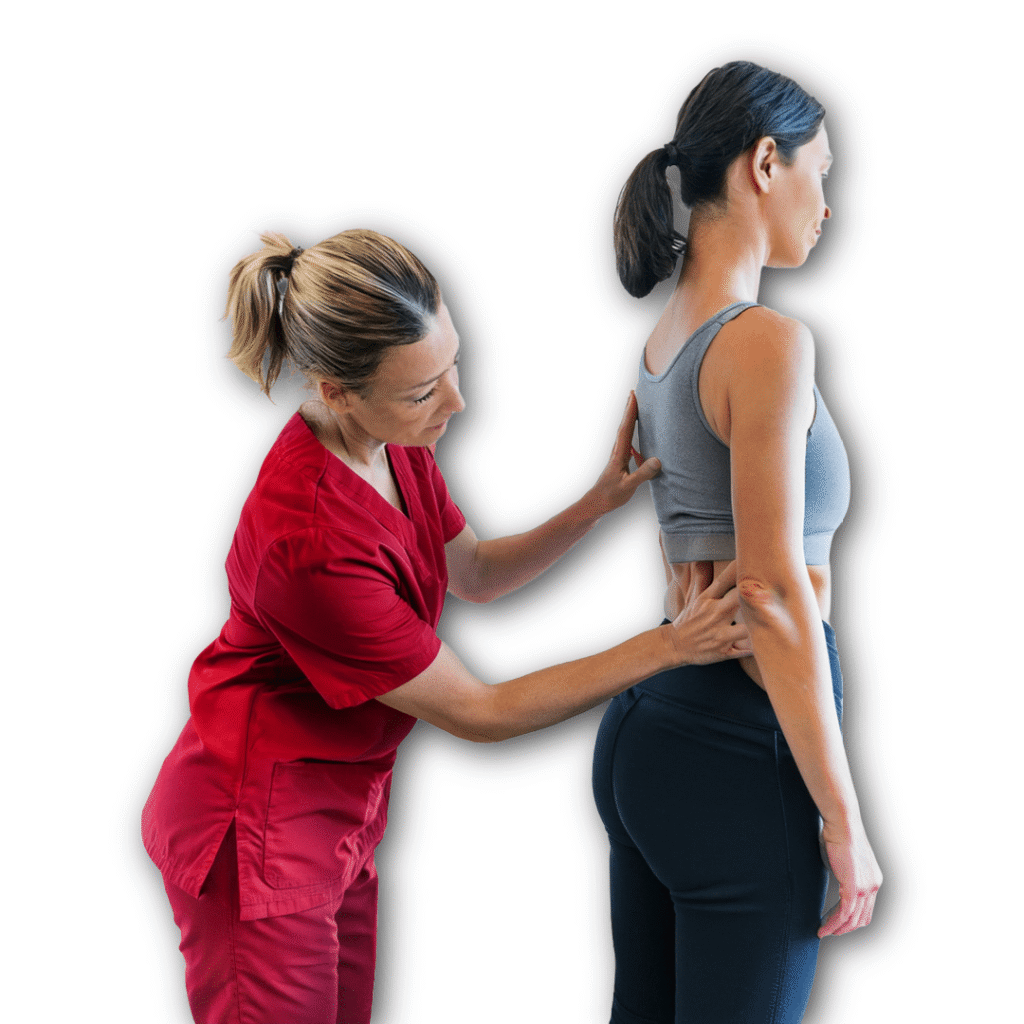Breaking It All Down: Decoding the Data
Go beyond symptoms to decode dysfunction and bring clarity to complex low back presentations

Clinical insight
A Comprehensive Assessment
Every MVMT holds a clue. During assessment, subtle breakdowns in spinal and pelvic mechanics reveal the dysfunctions, inefficiencies, and imbalances in how your body moves.
Range of motion
What if pain could tell you exactly where to start? Lumbar range of motion isn’t just about movement—it’s a roadmap. The McKenzie Method uses simple, repeated motions to reveal pain patterns, predict disc or stenosis involvement, and point you straight to the most effective home exercise.
Directional MVMT pattern
Not all leans are scoliosis—sometimes it’s pain talking. An antalgic lean often signals either a disc or facet joint issue, pushing the body to shift away from pain. The fix? One-sided wall exercises that provoke discomfort but are crucial to retraining—and yes, they need to keep going.
Lumbar scan
Heel & Toe Walk (aka “Catwalk Scan”). A quick, reliable screen to assess lumbar control and nerve function. This simple test can reveal subtle weaknesses or nerve irritation before obvious symptoms appear. If your patient struggles to keep toes or heels raised, it’s a red flag worth further evaluation.
SI Provocation
What if you could pinpoint SI joint dysfunction with over 90% accuracy in just five simple steps? The Laslett Cluster combines targeted provocation tests to help you quickly zero in on the true source of pain. The secret? It’s not about doing them all—it’s about knowing which ones tell the story.
Straight leg raise
How much can a simple leg raise really tell you? The Straight Leg Raise is a fast, powerful screen—but it’s not just about the angle or the pain. It’s about how both work together to reveal the real problem hiding beneath the surface
Hip mobility
Think your hips are fine? Think again. A blinded study found that even symptom-free adults had shocking rates of hidden hip abnormalities—labral tears, cartilage defects, structural changes—most without ever knowing it. The kicker? Age stacks the odds against you, whether your patients feel it yet or not.

